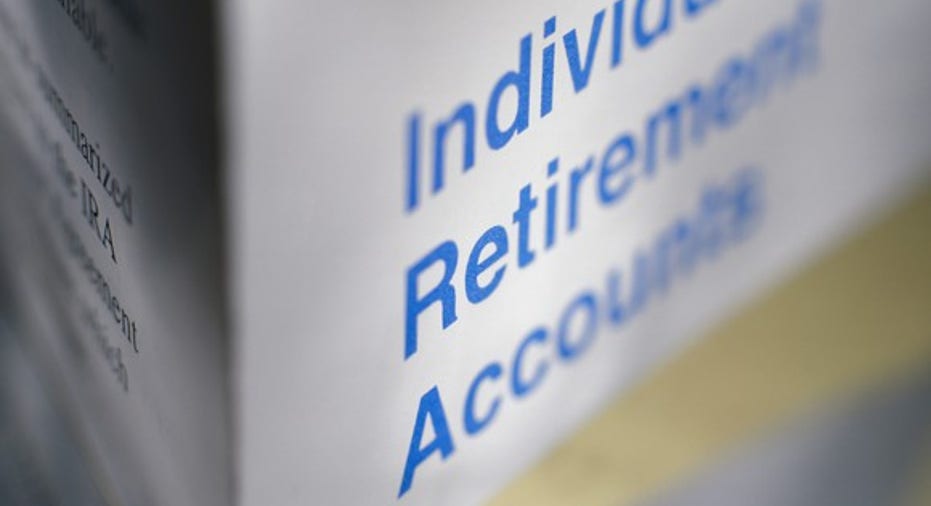IRA Options for the Self-Employed

Working for yourself has a lot of perks. Being able to save easily for retirement isn't one of them, thanks to the inaccessibility of employer-sponsored 401(k) or pension plans.
Individual Retirement Account. Image source: Getty Images.
Self-employed individuals currently make up around one-third of the workforce, and this entrepreneurial group is expected to account for 40% of all U.S. workers by 2020. Unfortunately, 61% of workers who've struck out on their own after previously working for an employer report they're more anxious about saving for retirement than when they had a traditional nine to five job.
Concerns about retirement are justified. A TD Ameritrade survey found self-employed baby boomers were collectively $1.7 trillion short of having $1 million saved for retirement. The individual shortfall: $335,000 per person.
The good news is, there are Individual Retirement Accounts to provide options for the self-employed to save for retirement and get tax breaks for doing so, even if entrepreneurs don't have access to a traditional 401(k). Consider these options to find the IRA that is right for you.
SEP-IRAs
SEP-IRA plans have high contribution limits, but require employers to contribute an equal percentage of salary for each employee who is eligible to participate. This option is often best for a business owner, including a sole proprietor, with few employees or no employees.
Maximum contributions for a SEP-IRA as of 2017 are the lesser of 25% of employee compensation or $54,000. There are no catch-up contributions. Contributions are made with pre-tax dollars and you count as your own employee.
All contributions to a SEP-IRA are made by an employer. If you have employees, contributing to their SEP-IRAs can become expensive. You do not have to contribute the same dollar amount to employee accounts as you contribute to your own; just the same percentage of income. If you save 15% of your salary in your SEP-IRA, you must make contributions to employee accounts of 15% of each employee's pay.
Simple IRAs
Simple IRAs are a good option for business owners with fewer than 100 employeesand no other workplace retirement plan. Employers can easily establish a Simple IRA using form5305-SIMPLEwith an eligible financial institution, such as a brokerage firm.
You can open a Simple IRA even if you are your company's only employee and even if you operate as a sole proprietorship.
Employees may contribute pre-tax up to $12,500 in a Simple IRA in 2017, plus an additional $3,000 at age 50 and up.Contributions are made through withholding funds from employee paychecks. Employers are required to match 3% of employee compensation or to make 2% non-elective contributions for each employee, regardless of whether that employee contributes to his or her own account.
If you have a large number of employees, making elective contributions to their accounts can be costly but is not generally as expensive as making SEP-IRA contributions for staff. Contribution limits are also lower than SEP-IRA limits, which means the maximum you can save for your own retirement in this account is much lower.
Traditional and Roth IRAs
Self-employed individuals can also contribute to a traditional or Roth-IRA, both of which are open to any workers, even those with traditional wage income.
However, contribution limits are often much lower, at just $5,500 maximum for most workers, plus an additional $1,000 in catch-up contributions if you're over 50 as of 2017. Higher-income earners are also disqualified from tax breaks for investing in these accounts if their spouse has access to a workplace retirement plan.
Still, if you are eligible and you don't want to use a SEP-IRA or Simple IRA because you can't afford to contribute to employee retirement accounts, a traditional or Roth IRA offers you another option.
Since you typically can put aside more tax-advantaged retirement savings due to your self-employed status, take advantage of this opportunity if you can. Pick the best self-employed retirement account option and start investing soon so you can reach your savings goals.
The $16,122 Social Security bonus most retirees completely overlook If you're like most Americans, you're a few years (or more) behind on your retirement savings. But a handful of little-known "Social Security secrets" could help ensure a boost in your retirement income. For example: one easy trick could pay you as much as $16,122 more... each year! Once you learn how to maximize your Social Security benefits, we think you could retire confidently with the peace of mind we're all after.Simply click here to discover how to learn more about these strategies.
The Motley Fool has a disclosure policy.